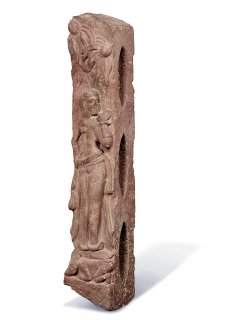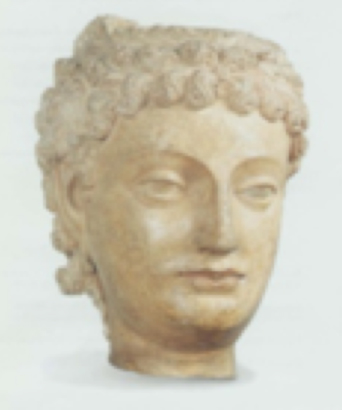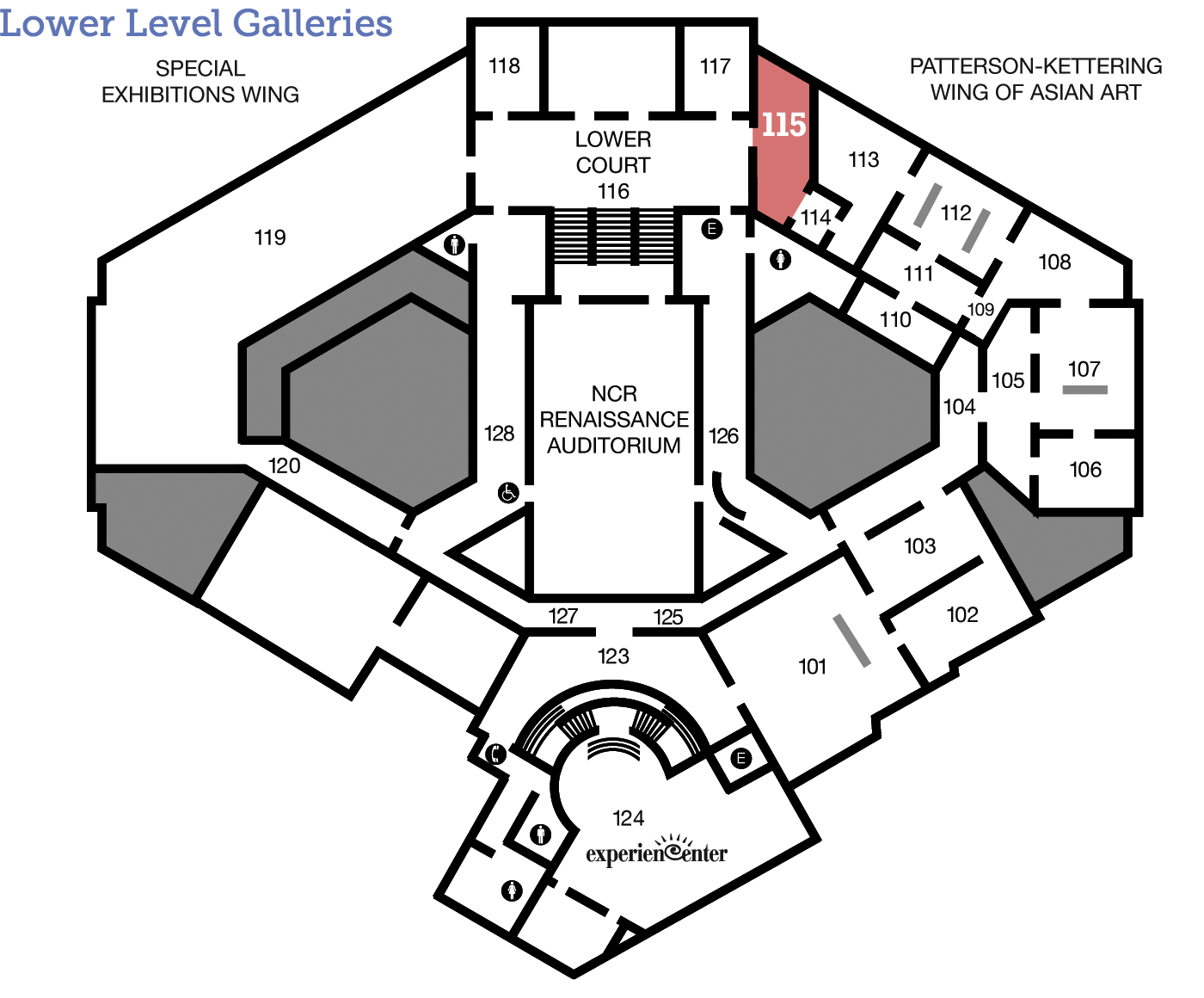
Indian
Railing Pillar with Design of Young Woman
Indian Art Red Sandstone Height: 36 ½ inches Museum purchase with funds provided by the Virginia V. Blakeney Endowment 1968.79
A Strong Woman
It is difficult to stand on a dwarf and hold up a stone railing, but this woman does it with ease and grace. She also has a lot to say about an epic time of Indian history when cultures mixed and the arts flourished.
A Day in the Life
Tools and Techniques
Behind the Scenes
Look Closer
Precision Cut
This pillar was not just for any railing, but a staircase railing. How can you tell? Look closer at the carved recesses and notice that there is a slight angle. While you are looking, notice the lotus flower decoration carved on the other side of the pillar.
Just for Kids
Signs & Symbols
Dig Deeper
A Passage to India
This pillar was made during the Kushan Empire and most likely came from a building near the capital city of Mathura. What was the legacy of the Kushan Empire in India? Follow historian Michael Wood into modern-day Mathura to find out.
© British Broadcasting Corporation
Transcript Summary:
By 130 CE the Kushan Empire, under the emperor Kanishka, ruled India from the Aral Sea in the north to the Bay of Bengal in the south. When Kanishka conquered the plains of India he made Mathura the capital. It was an international city, a famous place of pilgrimage even today. Ancient Greeks called Mathura the city of the gods. People from all over—Greeks, Romans, Bactrians, Persians, and Chinese—mixed as the Silk Route opened up between China, India, and the Mediterranean. This made it a time of great achievements in the arts and ideas.
Arts Intersected
Part of the Whole
This pillar was part of a traditional Buddhist building called a stupa. But the figure on the pillar is a yakshi, an earth-spirit of fertility and abundance, particularly associated with trees. What are stupas and why would an earth-spirit appear on one? Learn more in the following video from the Asian Art Museum.
© Copyright Asian Art Museum Chong-Moon Lee Center for Asian Art and Culture, 2002
Transcript Summary:
Stupas are burial mounds that contain remains from the historical Buddha, and sometimes those of Buddhist teachers or monks. The best example of an early stupa is at Sanchi, in central India. Over 2000 years old, it has four large gateways. Devotees would enter through the gates and walk clockwise around the stupa. Decoration included fertility deities that were drawn from local traditions and would appeal to popular tastes. Such figures may have helped mark the transition from secular to sacred space. There are also narrative scenes, such as events from the Buddha’s life, although early on the Buddha was only depicted through symbols, such as a wheel, an umbrella, or a footprint. The shape of the stupa changed over time. In East Asia, it developed into a multi-story tower.
The Sculpture Speaks
Did You Know?
Expert Opinion
Look Around
One Flourishing Empire, Two Schools of Art
The Kushan Empire (2nd century BCE–3rd century CE) existed at the same time as the Roman Empire in Europe and the Han dynasty in China, covering areas of modern day India, Pakistan, and Afghanistan. Rulers of the Kushan Empire provided strong patronage for the arts, which supported the evolution of two distinct styles: one centered in the city of Gandhara in the north, and the other in the capital city of Mathura in the south. This pillar represents one style. You can see the other style in the Head of Bodhisattva nearby.

Indian, Gandharan (Gupta Empire, 320–600), Head of Bodhisattva, 5th century, height: 15 inches. Gift of the Honorable Jefferson Patterson, 1944.46
Look closer at both and then try to identify which one is in the Mathuran style and which is in the Gandharan style.
1. The forms are soft, full, and idealistic. It is influenced by indigenous Indian artistic traditions. It often uses a distinct red sandstone.
A. Mathuran
B. Gandharan
2. The forms are sharp, refined, and realistic. It is influenced by Greco-Roman art, which had arrived in the region as early as the conquests of Alexander the Great. It often uses schist or stucco.
A. Mathuran
B. Gandharan
After looking at both, which style do you find more interesting?
Poll
About the Artist
Talk Back
A Piecemeal Masterpiece?
This pillar served a practical purpose in a Buddhist stupa. If you could go back and visit the complete stupa, would you even notice this pillar? Can a fragment of something be a masterpiece on its own? If so, how?

